Reasons to Upgrade Your Braking System with a Powerbrake BBK
GVWR (gross vehicle weight rating) can easily become a concern when building a 2nd or 3rd Gen Tacoma.
The Tacoma (2005-2023) can only handle a payload of up to 1600 pounds depending on the model. After 10+ years of modding Toyotas, we’ve learned that weight is the enemy. It’s common for these trucks to go over GVWR with a full build; camper/topper, front/rear bumpers, winch, skids and sliders, drawer system, dual battery systems, storage systems, and more. A heavy truck brings a multitude of problems; loss in MPG, poor handling on/off-road, and most importantly in terms of safety, poor braking.
With all the added vehicle weight + heavy tires, one of the most important mods you can install is a Big Brake Kit (BBK).
Before we jump into the benefits of a BBK, and why Powerbrake is my go-to option, I’ll share my experience with different kits.
Find It Online
OEM-Spec Kits?
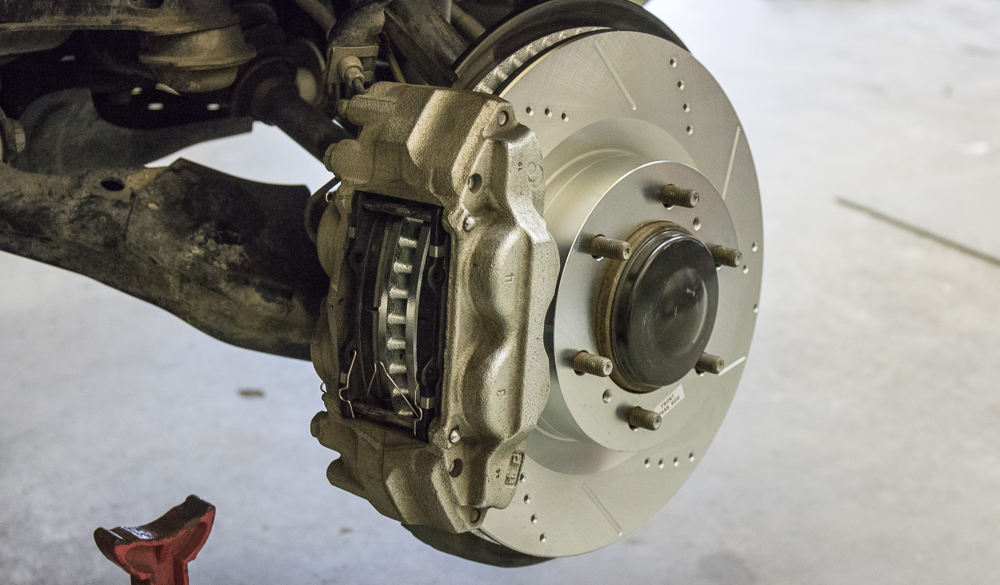
After 10+ years of building five overland-focused builds, here is what I learned.
Most “OEM-spec” replacements won’t get the job done when pushing max-payload. OEM-spec replacement “upgrades” are designed to handle the same weight as an OEM caliper/rotor system. Most aftermarket options quote taglines such as “products are made to OEM specifications” which might work for minimal payload weight (around 20%), but not for fully outfitted vehicles pushing 70% – 90% payload capacity. Most kits offer the same size caliper/rotor. The only difference is usually found in the pad compound. Some people think these aftermarket pads are better than OEM while they’re actually worse.
I experienced this back in 2016 on my first 5th Gen 4Runner build. My OEM setup needed to be replaced so I bought a cheap kit from Amazon. The calipers/pads and rotors were great at first but after 6 months of wheeling and daily driving, they started to squeal, the rotors warped after numerous water crossings, and the braking performance began to fade.
After the wheeling season ended, I bought a different brand. The next kit had a bigger brand name, had better reviews, and was more expensive – but still cheaper than OEM Toyota brakes. I expected a slightly better experience but the following season was the same; brake fade, squeal, warped rotors… you name it. Two years later, I saved some money and bought an OEM set and everything was back to normal.
Most of the OEM-spec aftermarket braking systems are cheaper for a reason. The majority of the kits out there are made from inferior materials.
I would personally stay with an OEM setup if I am running 20% – 30% of the max payload or go with a Powerbrake BBK if I am pushing into the 80% – 100% of the max payload.
The only exception to this might be Powerbrake’s new D-Line OEM replacement, however, I have not run those so I cannot speak on their quality just yet.
Experience with Powerbrake
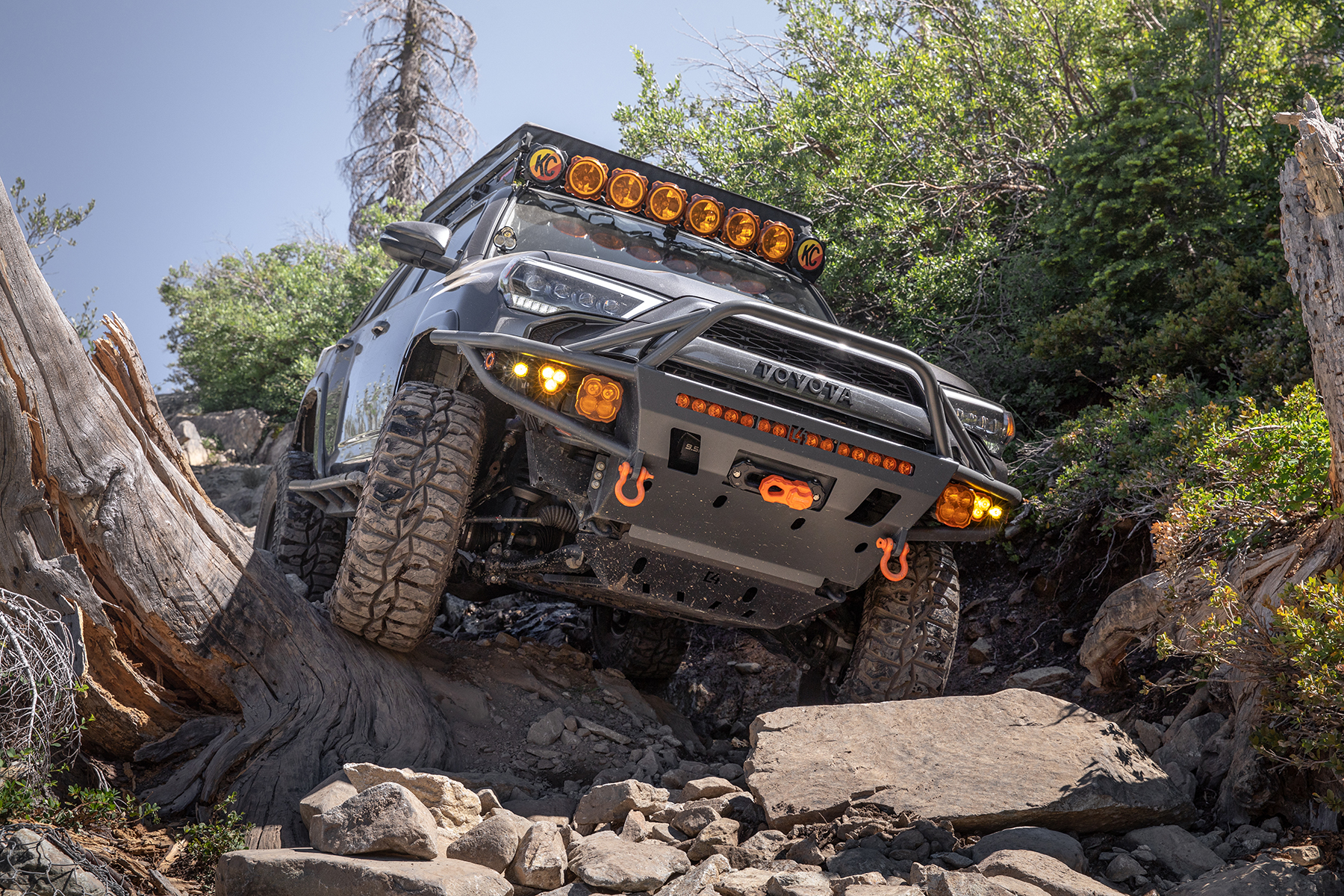
I’ve been running Powerbrakes on my 4Runner for two years now. No complaints.
Fast forward 6 years and I was working on my second build; a 2016 4Runner. This build was much heavier than my first build; full steel armor, a fully loaded drawer system with a fridge, 35″ tires, and a 230 lb. rooftop tent… she was a heavy girl. On day three of a two-week trip through Colorado coming down a huge grade, I noticed the first sign of brake fade from my OEM brakes. The next 10+ days of driving through canyons and valleys were slow. Instead of using my brakes 100% of the time, I had to alternate between the brakes and the lower gears to keep my speed down. It wasn’t fun but I got through it.
Once I got back to California, I knew I needed an upgrade – but there was no way I was looking at an OEM-spec “upgrade” after my previous experience.
That’s when I found big brake kits. I debated between Stoptech or Powerbrake. I went with Powerbrake because of numerous friends running them and they had nothing but good things to say. They also have an impressive background and involvement in outfitting Dakar Rally vehicles overseas, partnered with Toyota builds. I didn’t think it was possible to find a braking solution better than OEM but I needed something to support the weight on the rig.
I installed the Powerbrakes back in 2022 and it was one of the best decisions I made for that build.
Two Years – No Complaints
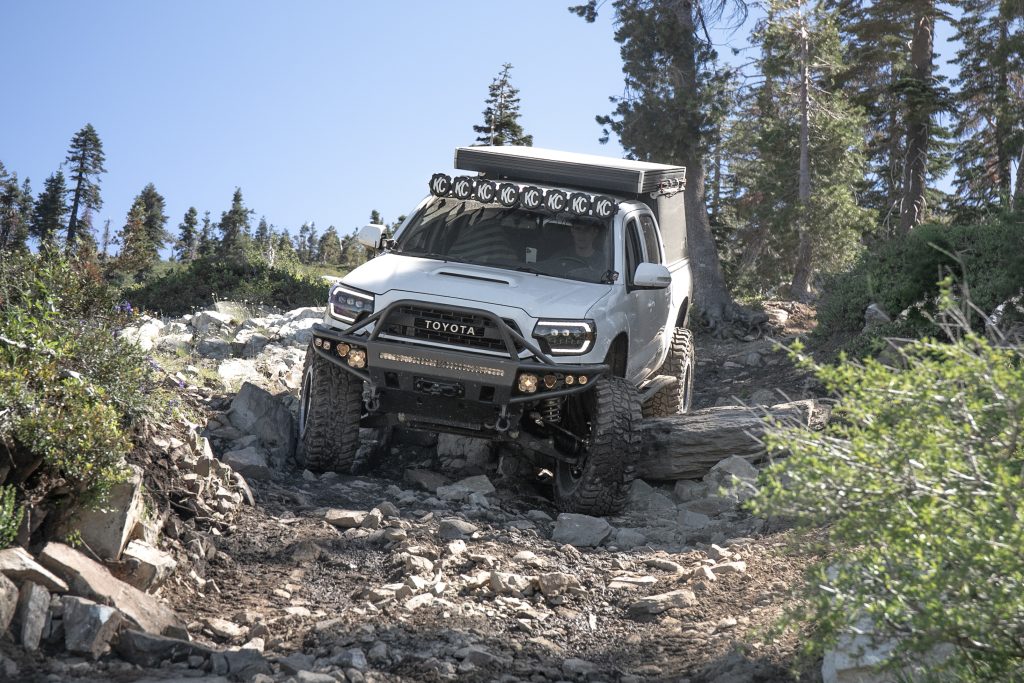
After running the Powerbrake for two years on my 4Runner without a single problem, I Installed them on my Tacoma.
The braking performance over OEM is a night and day difference. The response in the braking system has been dramatically improved. From daily driving to coming down steep grades throughout the Sierra Mountains, I am incredibly confident in their ability to stop on a dime. I drive both of my trucks hard, too.
After two years, I haven’t had any sequel, brake fade, judder, or warped rotors. I haven’t noticed any signs that the brakes need to be serviced either. They have held up great under extreme conditions.
Powerbrake has a heat indication system on the rotors that will change colors depending on how hot the brakes get. I haven’t even made it past the first heat threshold on the rotors – if that tells you anything. I could push these brakes even harder and I doubt they would break a sweat.
They have been solid. I don’t think I’ll ever go back to an OEM system or any other aftermarket system after running this kit.
When To Upgrade?
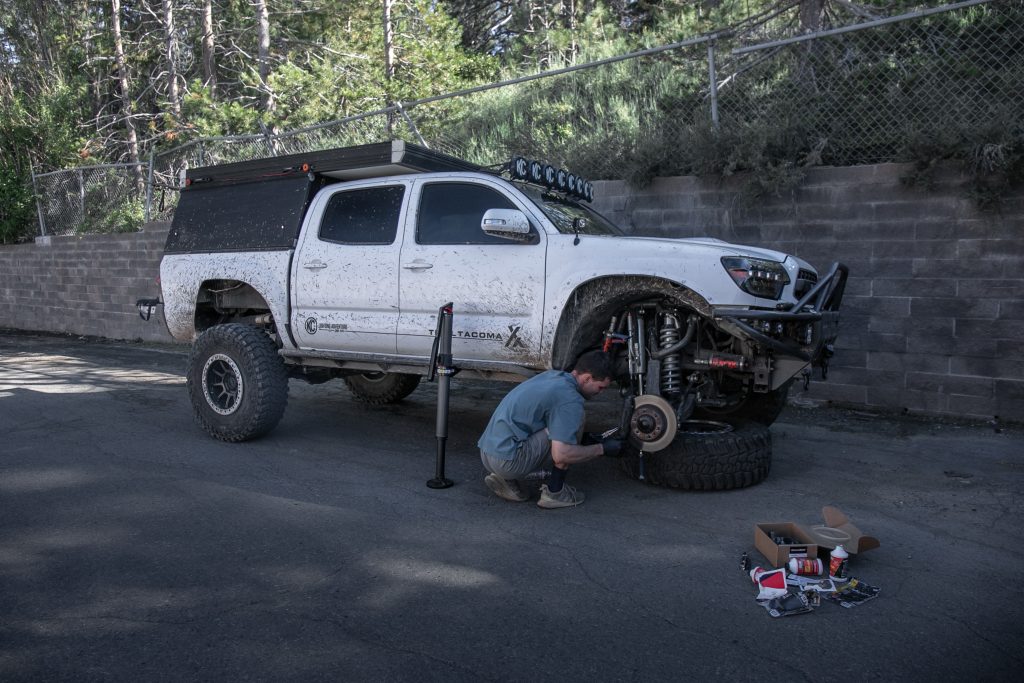
Replacing a caliper and lines after a brake line fitting broke off inside the caliper after wheeling out on Gold Lake.
I decided to upgrade to the Powerbrakes for the Tacoma for a few reasons but it all comes down to weight. Some of the heavier mods on the truck include the GFC camper, 37″ Yoko M/Ts, and like most builds, full steel armor throughout. The last time I weighed my rig it was almost 6000 pounds which puts me right at max payload. My 2015 DCSB was due for a brake upgrade so when I was faced with the decision, I knew the answer was Powerbrake.
If you know your curb weight, just add the weight you have in mods to your curb weight. That will give you the GVW. If you want an easy way to calculate everything, just head over to the GVWR and payload calculator. It’s designed for off-road and overland builds. Just enter in your modification weight and then compare that against your exact year/make/model GVWR and max-payload. It’s a cool tool for anyone looking to understand the exact weight of their build.
So when should you upgrade to a big brake kit?
It’s all personal preference but you should start considering it when your brakes fade, you run 35″+ tires or you’re pushing into a high max payload number with heavy mods. It dramatically improves daily driving as well.
Let’s take a look at the top reasons you might want to upgrade your OEM setup.
1. Vehicle Weight
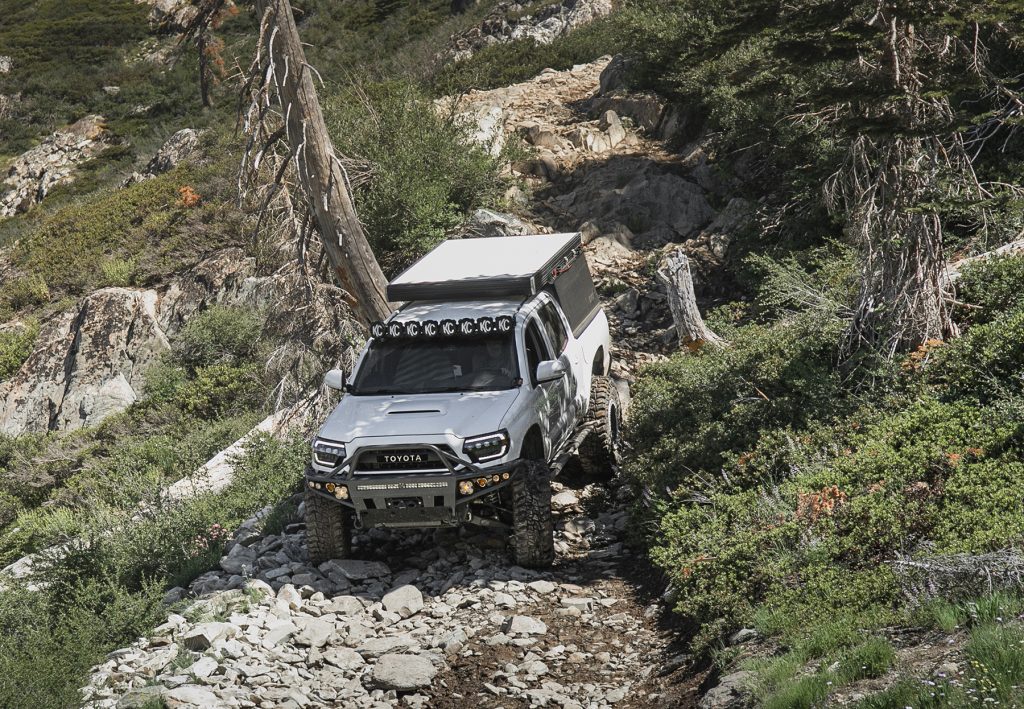
We already touched on vehicle weight quite a bit, however, this is the most important area to focus on. Modifications can add up fast. If you don’t pay attention to it, you can end up with a heavy build over time.
If you don’t support the weight with a bigger braking system, at some point the OEM-spec brakes will fail or at the minimum, fade. When this happens, you’ll be forced to use the gears of your truck to slow down. After years of experience, this is not a position you want to be in when out on a weekend adventure.
2. Unspring Rotational Mass
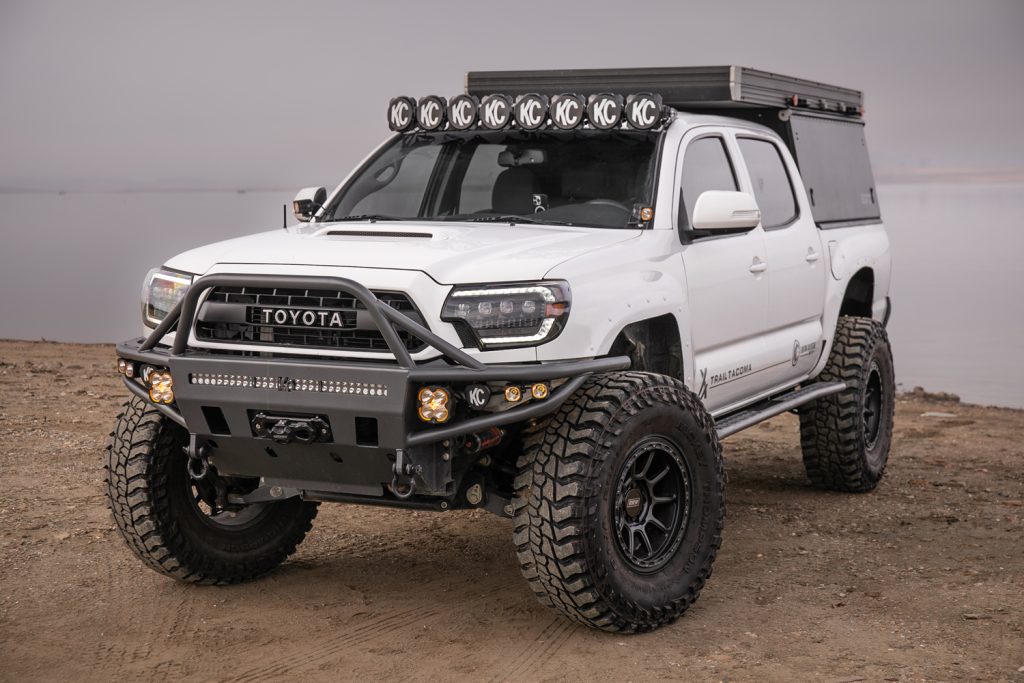
Everyone knows bigger tires are heavy. Even when upgrading to something as simple as a 33″ tire, this can cause a dramatic performance drop when braking. You don’t need to upgrade to a BBK at this size but it’s not going to hurt either. When you start getting into the 35″ – 37″ size, this is where performance really starts to go down. If you’re thinking about moving up to a 35″ tire or larger, then a big brake kit is something you should absolutely consider for your build.
Size Comparison & Weight Percentage Difference
For reference, let’s take a look at the estimated percentage in weight difference on some commonly found tire size upgrades.
- 31″ STOCK TIRE SIZE: 265/70r17
- 32″ – 275/70r17
- 55 lbs/tire
- 220 lbs/set
- 20% more weight
- 33″ – 285/70r17
- 65 lbs/tire
- 260 lbs/set
- 36% more weight
- 35″ – 35X12.5r17
- 75 lbs/tire
- 300 lbs/set
- 50% more weight
- 37″ – 37X12.5r17
- 85 lbs/tire
- 340 lbs/set
- 61% more weight
3. Improved Stopping Power
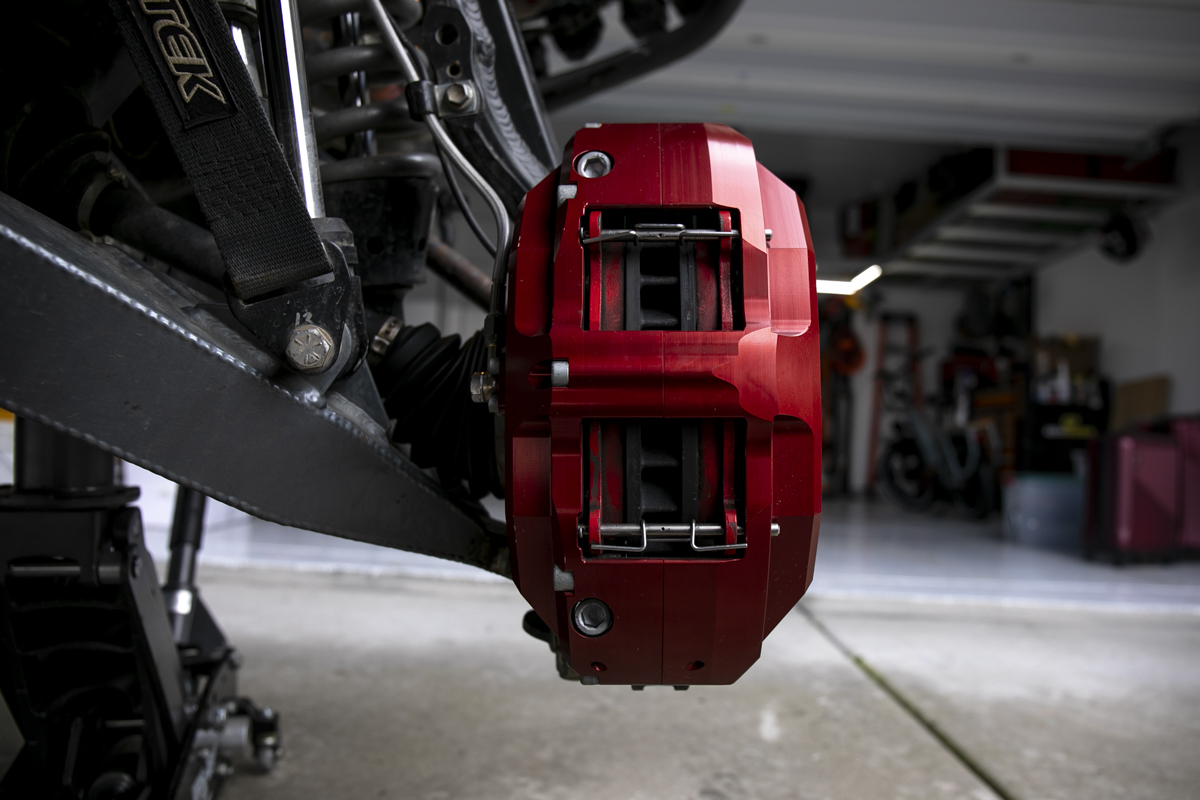
The kit utilizes lightweight aluminum calipers and vented rotors. These components offer improved heat dissipation and greater surface area for braking, resulting in significantly enhanced stopping power compared to factory brakes – especially when loaded with extra weight. The combination of upgraded materials and design results in shorter stopping distances and more consistent performance, ideal for demanding off-road and towing applications.
4. Better Heat Dissipation
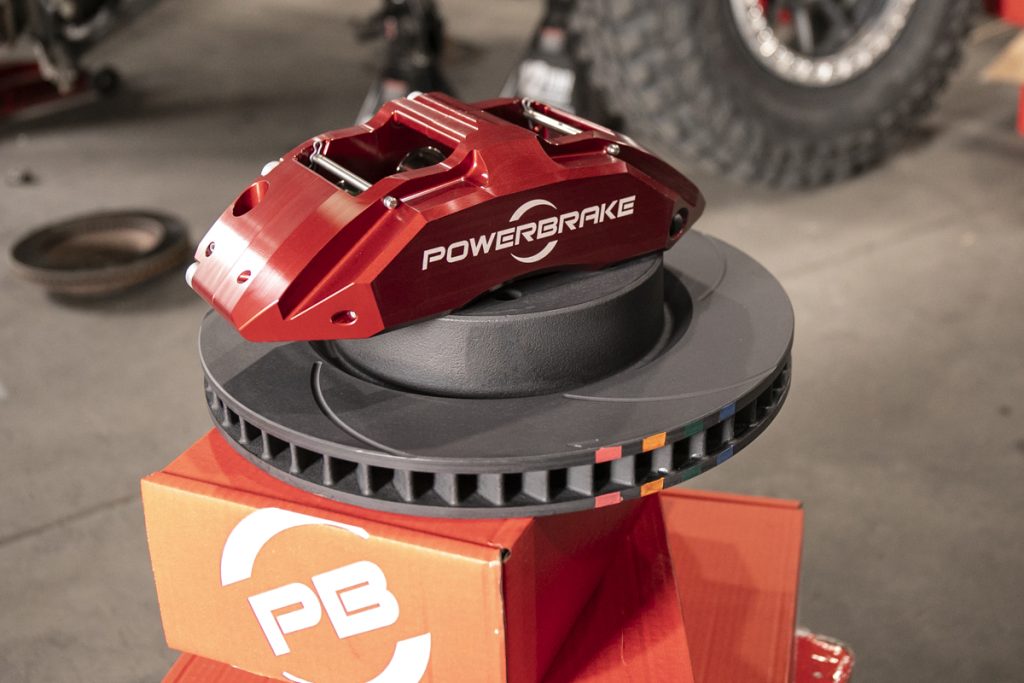
Firstly, the 1-Piece 350x34mm 48-vane vented rotors have a larger surface area, which allows for more efficient heat transfer to the surrounding air. Additionally, the 6-piston billet anodized aluminum calipers dissipate heat more effectively than traditional cast iron calipers, preventing brake fade during prolonged or aggressive braking maneuvers. Together, these design elements help maintain consistent braking performance, even under heavy loads or extreme driving conditions.
5. Enhanced Durability
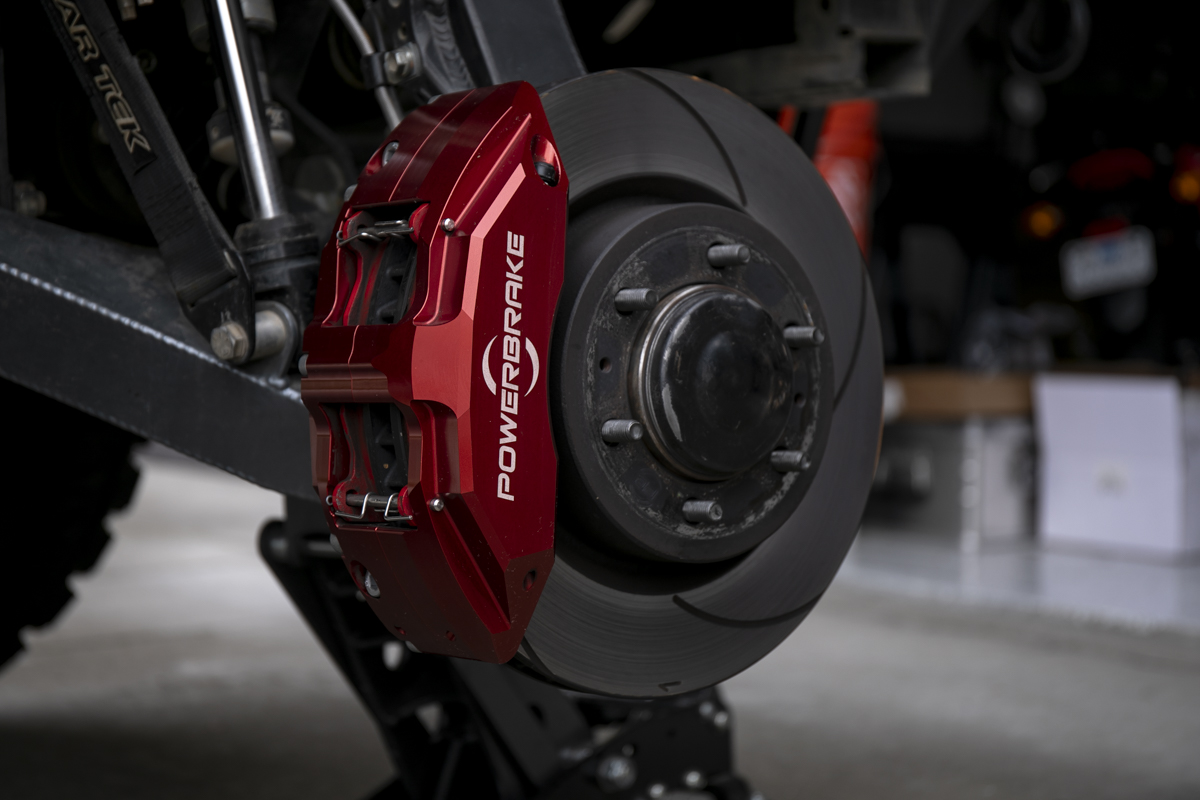
The components of this kit are often constructed from higher-quality materials. To start, you have lightweight aluminum calipers compared to cast steel calipers found on the OEM setup. The high-performance brake pads that PB uses are also of much higher quality than the OEM pads and are designed to support additional weight and provide extreme braking performance under load. This increases durability and longevity, reducing the need for frequent brake maintenance or replacement.
6. Increased Safety
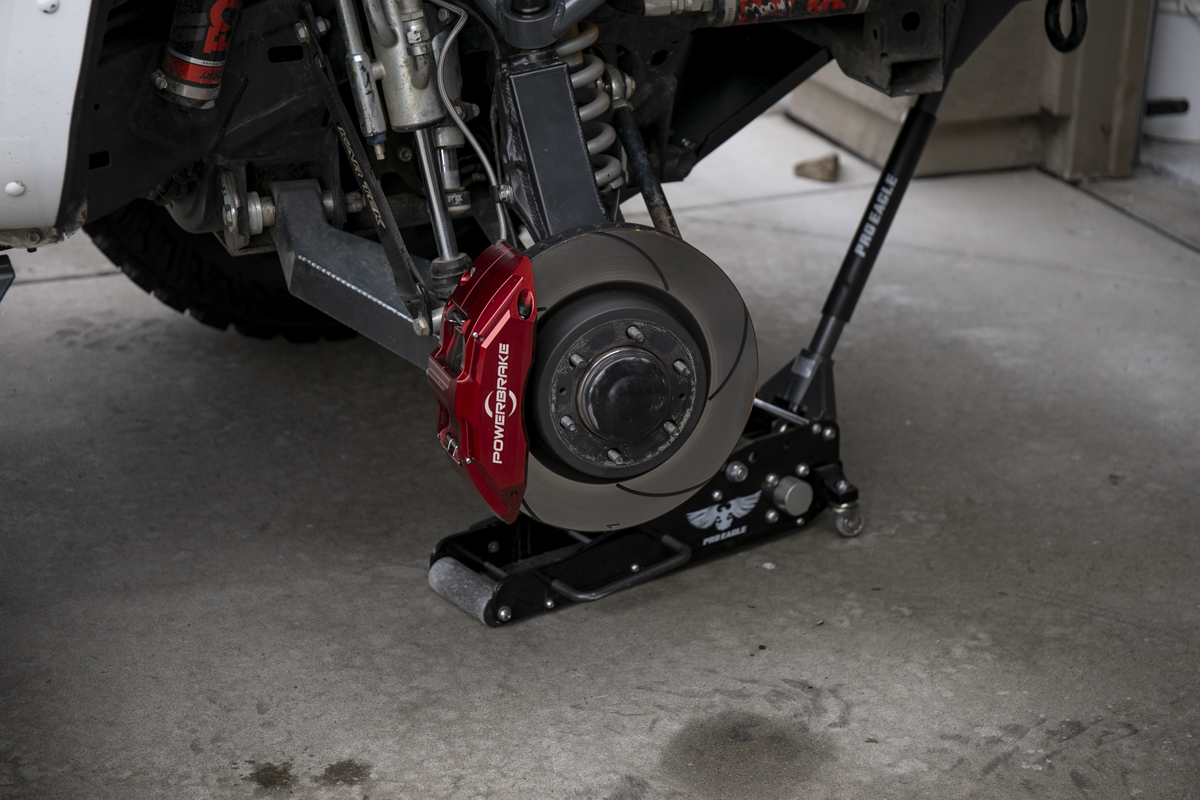
Upgraded brakes can contribute to overall vehicle safety by providing more consistent and reliable braking performance, especially in emergency situations or adverse driving conditions. This can help reduce the risk of accidents and improve driver confidence on the road.
Final Thoughts
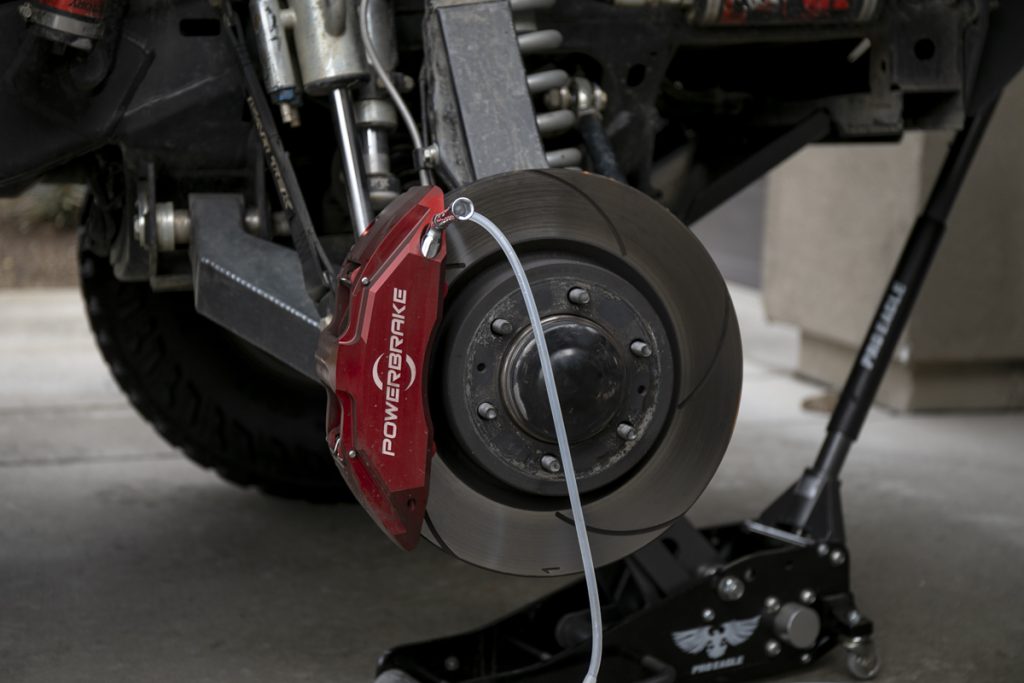
Overall, installing a BBK on a Tacoma can be a worthwhile investment for owners looking for improved performance, durability, and safety from their vehicle’s braking system.
I think the drivers who are running a heavy build, and or bigger tires will see the most bang for their buck from a big brake kit.
